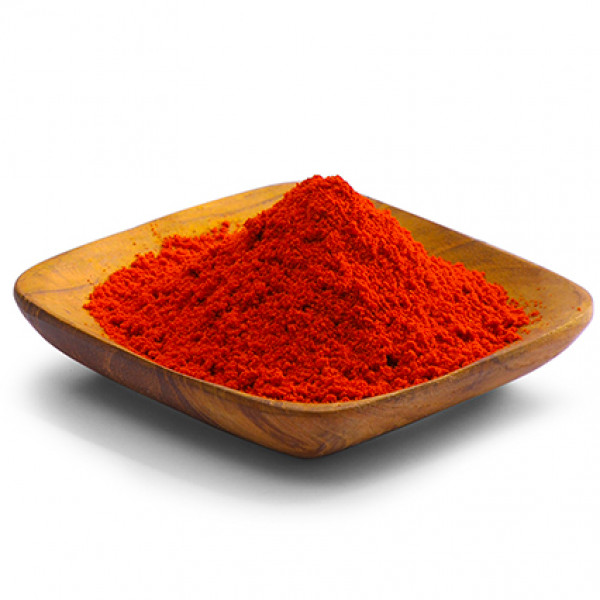
19, Apr 2025
Cayenne vs Red Chili Powder: Key Differences, Heat Levels & Best Uses
When it comes to adding heat to dishes, cayenne pepper and red chili powder are two popular choices. But are they the same? Which one is spicier? Can they be used interchangeably?
In this detailed guide, we’ll break down the differences between cayenne vs red chili powder, including their origins, Scoville heat levels, culinary uses, and best substitutes in Indian cooking.
What is Cayenne Pepper?
Cayenne pepper is made from dried and ground cayenne chili peppers (Capsicum annuum). It’s known for its:
- High heat level (30,000–50,000 Scoville Heat Units)
- Bright red color
- Sharp, pungent flavor
Common Uses of Cayenne Pepper
✔ Sprinkled on pizza, fries, and roasted nuts
✔ Added to hot sauces and marinades
✔ Used in Mexican, Cajun, and Creole cuisines
What is Cayenne Called in India?
In India, cayenne is sometimes referred to as “Lal Mirch Powder”, but it’s not the same as Kashmiri or regular red chili powder.
What is Red Chili Powder?
Red chili powder is a broader term that includes different types of ground chilies, such as:
- Kashmiri Red Chili Powder (mild, vibrant red)
- Guntur Chili Powder (very spicy, South Indian)
- Byadgi Chili Powder (medium heat, deep red color)
Heat Level Comparison
| Type | Scoville Heat Units (SHU) |
|---|---|
| Cayenne Pepper | 30,000–50,000 |
| Kashmiri Chili Powder | 1,000–2,000 |
| Guntur Chili Powder | 35,000–40,000 |
Common Uses of Red Chili Powder
✔ Essential in Indian curries, biryanis, and masalas
✔ Used in tandoori marinades for color and heat
✔ Added to chaat masala and snacks
Key Differences: Cayenne vs Red Chili Powder
| Feature | Cayenne Pepper | Red Chili Powder |
|---|---|---|
| Origin | South America | India (varies by type) |
| Heat Level | Very hot (30K–50K SHU) | Mild to hot (1K–40K SHU) |
| Color | Bright red | Deep red (Kashmiri) to brownish-red (Guntur) |
| Flavor | Sharp, pungent | Smoky, earthy (varies by chili type) |
| Common Use | Hot sauces, global cuisines | Indian curries, spice blends |
People Also Ask
1. Is Red Chili Powder the Same as Cayenne?
No, cayenne is much spicier (30K–50K SHU) than most Indian red chili powders (1K–40K SHU).
2. What is Cayenne Pepper Called in India?
It’s sometimes called “Lal Mirch Powder”, but true cayenne is less common than Kashmiri or Guntur chili powders.
3. Is Kashmiri Lal Mirch the Same as Cayenne?
No, Kashmiri chili is milder (1K–2K SHU) and used for color, while cayenne is much hotter.
4. Is Cayenne Pepper Stronger Than Red Pepper?
Yes, cayenne (30K–50K SHU) is stronger than most red chili powders except Guntur chili (35K–40K SHU).
5. Difference Between Red Chili Powder & Kashmiri Red Chili Powder?
- Regular red chili powder (Guntur/Byadgi) is spicier.
- Kashmiri chili powder is mild, used mainly for color.
6. मी लाल मिरची पावडरऐवजी लाल मिरची वापरू शकतो का? (Can I Use Whole Red Chilies Instead of Powder?)
होय, परंतु ते वापरण्यापूर्वी भाजून बारीक करावे. (Yes, but dry roast and grind them first.)
7. लाल मिरची लाल मिरचीपेक्षा जास्त मजबूत आहे का? (Is Cayenne Stronger Than Red Chili?)
होय, cayenne (30K–50K SHU) नियमित लाल मिरची पावडर (1K–40K SHU) पेक्षा जास्त तीव्र आहे.
Best Substitutes
If You Don’t Have Cayenne Pepper:
- Use Guntur chili powder (similar heat)
- Mix paprika + a pinch of black pepper (milder option)
If You Don’t Have Red Chili Powder:
- Use cayenne + smoked paprika (for color & heat)
- Try Kashmiri chili + a dash of black pepper (for mild dishes)
Which One Should You Use?
- For Indian Curries: Kashmiri or Guntur chili powder (better flavor).
- For Global Dishes (Hot Sauces, Wings): Cayenne (higher heat).
- For Color Without Heat: Kashmiri chili powder.
Conclusion
While both cayenne and red chili powder add heat to dishes, they differ in origin, spice level, and culinary uses. Cayenne is much hotter and common in Western cooking, while Indian red chili powders (like Kashmiri and Guntur) offer varying heat levels for curries and masalas.
Pro Tip: Always check the Scoville scale if you’re swapping one for the other!
- 0
- By admin
- April 19, 2025 07:33 AM
